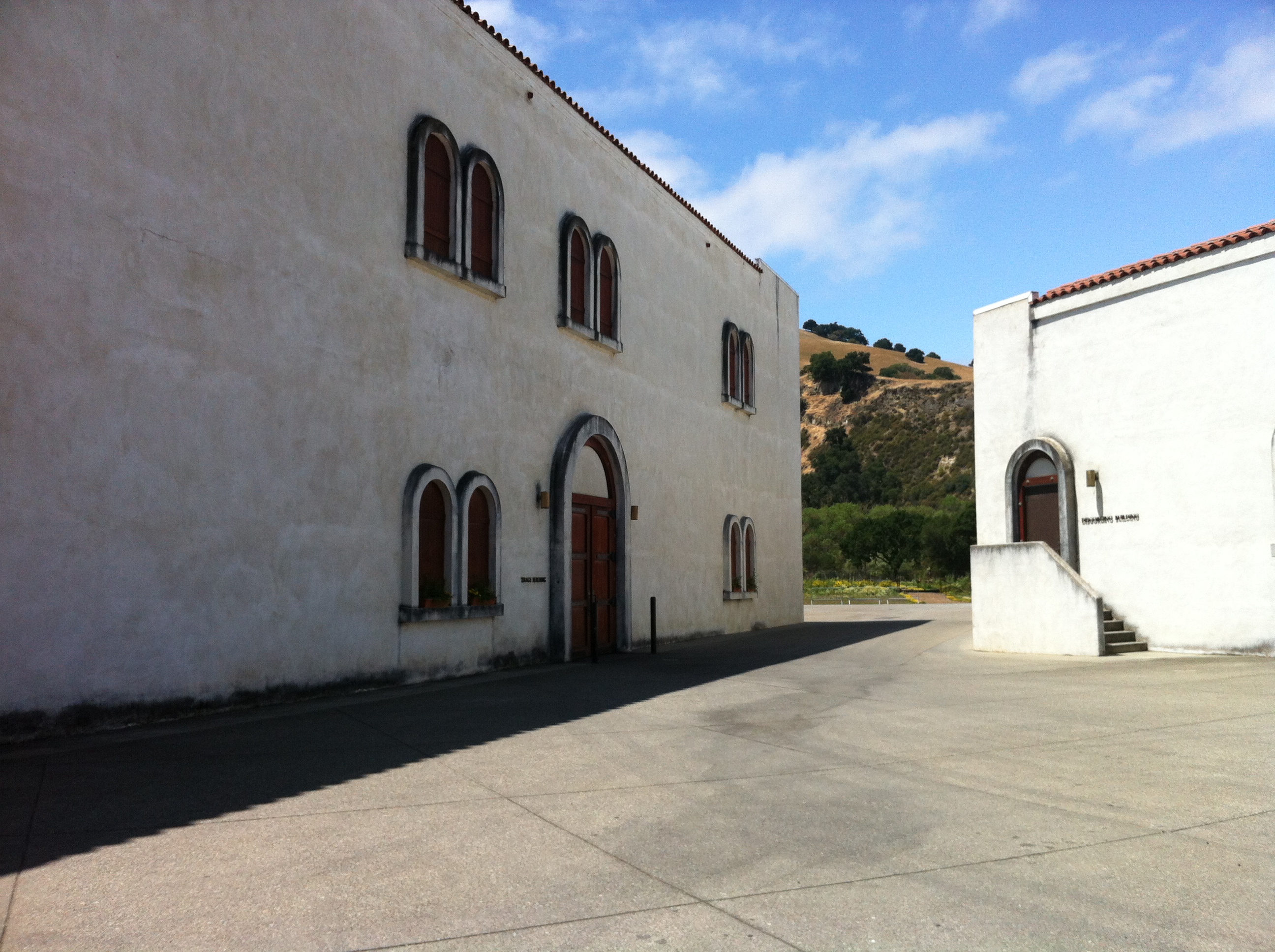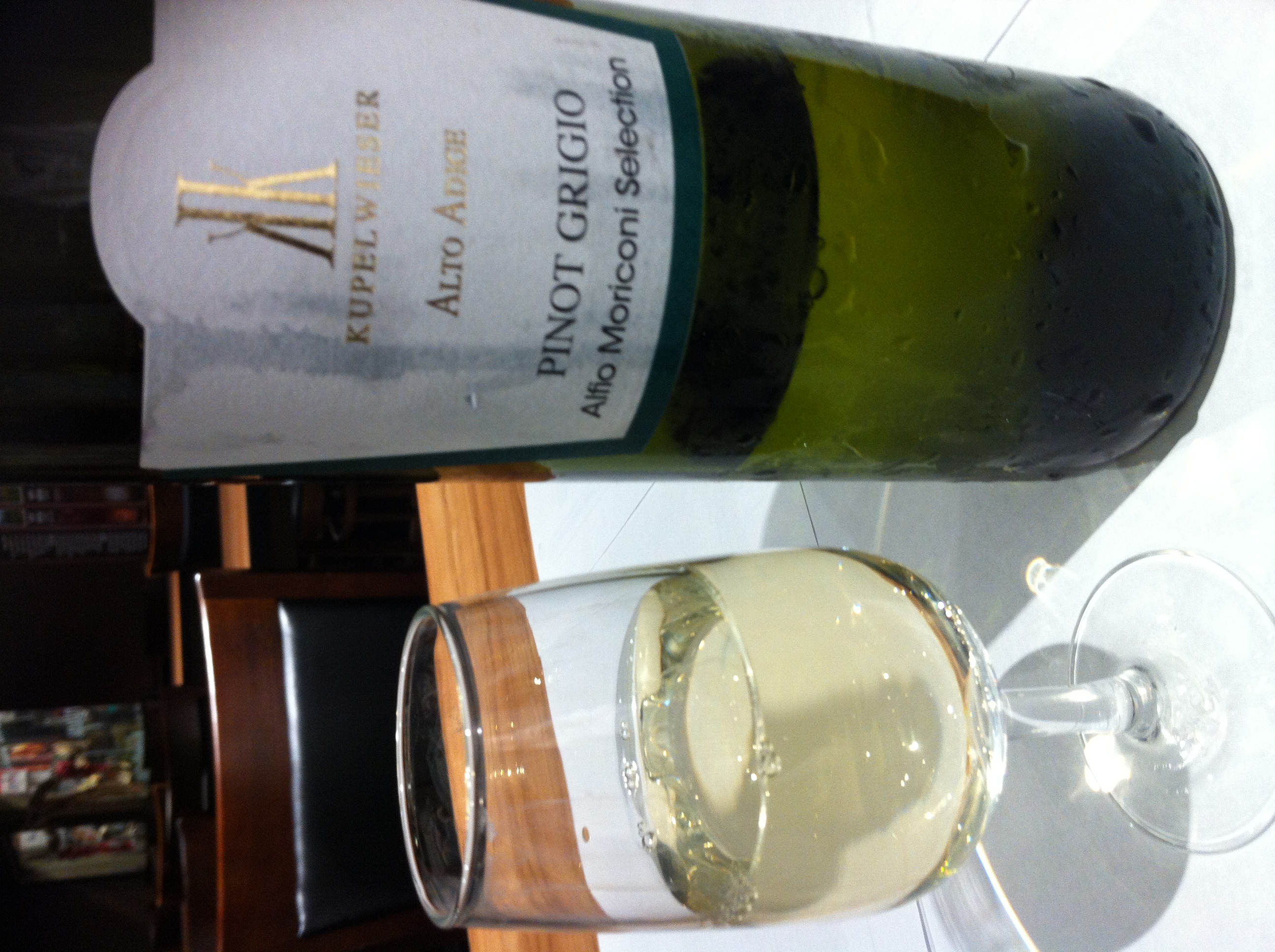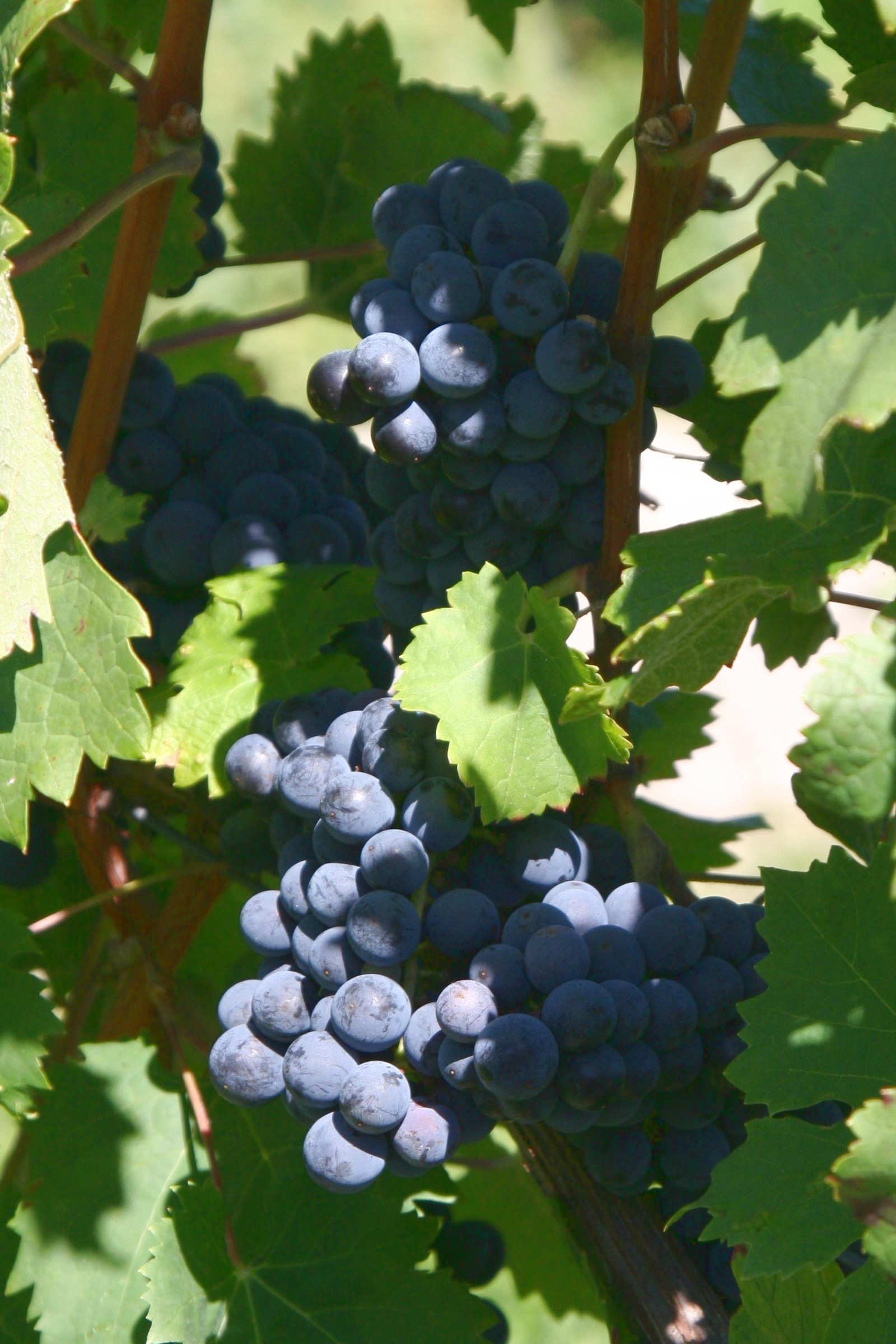|
Carso DOC
Carso – Kras is an Italian wine-producing zone located in the provinces Trieste and Gorizia in the Friuli-Venezia Giulia region, on the border with Slovenia. It was classified as a Denominazione di Origine Controllata (DOC) in 1985 and produces both red and white wine. It takes its name from the Karst Plateau and covers 57 hectares. It has produced 1, 080 hl total 2013/2014, with an average of 11, 240 cases bottled annually. Varieties and wine types Traditionally, most of the red wine is produced from Terrano grapes, and the white wine primarily from Malvasia Istriana grapes. However, a number of international varieties are also in cultivation. Carso DOC wine can be produced either as Carso Rosso, with a minimum of 70% Terrano and a maximum of 30% of other local grape varieties, such as Piccola nera, or as varietal Carso, with a minimum of 85% of the variety indicated and a maximum of 15% of other varieties allowed within the DOC zone. The following varietal Carso wines are ... [...More Info...] [...Related Items...] OR: [Wikipedia] [Google] [Baidu] |
Italian Wine
Italian wine () is produced in every region of Italy. Italy is the country with the widest variety of indigenous grapevine in the world, with an area of under vineyard cultivation, as well as the List of wine-producing regions#Countries, world's largest wine producer and the largest exporter . Contributing 49.8 million Hectolitre, hl of wine in 2022, Italy accounted for over 19.3% of global production, ahead of French wine, France (17.7%) and Spanish wine, Spain (13.8%); the following year, production decreased by 11.5 million hl, and Italy was surpassed by France. Italian wine is also popular domestically among Italians, who consume a yearly average of 46.8 litres per capita, ranking third in world wine consumption. The origins of viticulture, vine-growing and winemaking in Italy has been illuminated by recent research, stretching back even before the Phoenicians and wine, Phoenician, Etruscans and Ancient Greece and wine, Greek settlers, who produced wine in Italy before Ancien ... [...More Info...] [...Related Items...] OR: [Wikipedia] [Google] [Baidu] |
Piccola Nera
Piccola nera is a red Italian and Slovenian wine grape variety that is grown in the province of Trieste within the Friuli-Venezia Giulia wine region and across the border in neighboring Slovenia where ampelographers believe that the grape originated. Piccola nera, whose name means "little black", tends to produce to light bodied red and rosé wines that are meant to be consumed young. It is a permitted variety in the ''Denominazione di origine controllata'' (DOC) wines of Carso where it is usually blended with Terrano and in Venezia ''Indicazione geografica tipica'' IGT classification where the grape can be used to make varietal wines.J. Robinson, J. Harding and J. Vouillamoz ''Wine Grapes - A complete guide to 1,368 vine varieties, including their origins and flavours'' pg 797 Allen Lane 2012 History and name origins Ampelographers believe that Piccola nera originated in the border region between Italy and Slovenia in what is now the province of Trieste in Italy and the Coastal ... [...More Info...] [...Related Items...] OR: [Wikipedia] [Google] [Baidu] |
Gewürztraminer
Gewürztraminer () is an aromatic wine grape variety, used in white wines, and which performs best in cooler climates. In English, it is sometimes referred to colloquially as Gewürz ( ; although this is never the case in German, because means "herb" or "spice"). In English and French it is usually written (without the umlaut). Gewürztraminer is a variety with a pink to red skin colour, which makes it a "white wine grape" as opposed to the blue to black-skinned varieties commonly referred to as "red wine grapes". The variety has high natural sugar and the wines are white and usually off-dry, with a flamboyant bouquet of lychees. Indeed, Gewürztraminer and lychees share the same aroma compounds. Dry Gewürztraminers may also have aromas of roses, passion fruit and floral notes. It is not uncommon to notice some ''spritz'' (fine bubbles on the inside of the glass). Gewürztraminer's sweetness may offset the spice in Southeast Asian cuisine. Etymology The German name Gew ... [...More Info...] [...Related Items...] OR: [Wikipedia] [Google] [Baidu] |
Sauvignon Blanc
Sauvignon blanc () is a green-skinned grape variety that originates from the city of Bordeaux in France. The grape most likely gets its name from the French words ''sauvage'' ("wild") and ''blanc'' ("white") due to its early origins as an indigenous grape in South West France. It is possibly a descendant of Savagnin. Sauvignon blanc is planted in many of the world's wine regions, producing a crisp, dry, and refreshing white varietal wine. The grape is also a component of the famous dessert wines from Sauternes and Barsac. Sauvignon blanc is widely cultivated in France, Chile, Romania, Canada, Australia, New Zealand, South Africa, Bulgaria, the states of Oregon, Washington, and California in the US. Some New World Sauvignon blancs, particularly from California, may also be called "Fumé Blanc", a marketing term coined by Robert Mondavi in reference to Pouilly-Fumé. Depending on the climate, the flavor can range from aggressively grassy to sweetly tropical. In cooler cl ... [...More Info...] [...Related Items...] OR: [Wikipedia] [Google] [Baidu] |
Pinot Grigio
Pinot gris, pinot grigio (, ), or ''Grauburgunder'' is a white wine , white wine grape variety of the species ''Vitis vinifera''. Thought to be a mutant clone of the pinot noir variety, it normally has a pinkish-gray hue, accounting for its name, but the colors can vary from blue-gray to pinkish-brown. The word ''pinot'' could have been given to it because the grapes grow in small pinecone-shaped clusters. The wines produced from this grape also vary in color from a deep golden yellow to copper and even a light shade of pink,J. Robinson: ''Vines Grapes & Wines'', p. 158. Mitchell Beazley 1986. . and it is one of the more popular grapes for skin-contact wine. Pinot gris is grown around the globe, with the "spicy" body (wine), full-bodied Alsace (wine), Alsatian and lighter-bodied, more acidic Italians, Italian styles being most widely recognized. The Alsatian style, often duplicated in New World wine regions such as Marlborough wine region, Marlborough, Oregon wine, Oregon, So ... [...More Info...] [...Related Items...] OR: [Wikipedia] [Google] [Baidu] |
Chardonnay
Chardonnay (, ; ) is a green-skinned grape variety used in the production of white wine. The variety originated in the Burgundy wine region of eastern France, but is now grown wherever wine is produced, from England to New Zealand. For new and developing wine regions, growing Chardonnay is seen as a 'rite of passage' and an easy entry into the international wine market. The Chardonnay grape itself is neutral, with many of the flavors commonly associated with the wine being derived from such influences as ''terroir'' and oak.Robinson, 2006, pp. 154–56. It is vinified in many different styles, from the lean, crisply mineral wines of Chablis, France, to New World wines with oak and tropical fruit flavors. In cool climates (such as Chablis and the Carneros AVA of California), Chardonnay wine tends to be medium to light body with noticeable acidity and flavors of green plum, apple, and pear. In warmer locations (such as the Adelaide Hills and Mornington Peninsula in Austral ... [...More Info...] [...Related Items...] OR: [Wikipedia] [Google] [Baidu] |
Refosco Dal Peduncolo Rosso
Refosco dal Peduncolo Rosso is a red Italian wine grape grown predominantly in the Friuli Venezia Giulia region of northeast Italy. The grape is a variety in the Refosco family (which also includes e.g. Terrano) and derives its name from its red stems. It is found in the ''Denominazione di origine controllata'' (DOC) of Colli Orientali del Friuli, Friuli Aquileia, Friuli Grave and Friuli Latisana. It is also found in the Veneto portion of the Lison Pramaggiore and in the Slovenian wine region of Koper. J. Robinson (ed) ''"The Oxford Companion to Wine"'' Third Edition pg 564-565 Oxford University Press 2006 In Slovenia, Refosco dal Peduncolo Rosso and Refosco are both called ''Terrano'' and are commonly used in a field blend. J. Robinson ''Vines, Grapes & Wines'' pg 201 Mitchell Beazley 1986 History Like the other Refosco grapes, the origins of Refosco dal Peduncolo Rosso are not completely known but current evidence suggest that it is indigenous to Italy. The grape ... [...More Info...] [...Related Items...] OR: [Wikipedia] [Google] [Baidu] |
Merlot
Merlot ( ) is a dark-blue-colored wine grape variety that is used as both a blending grape and for varietal wines. The name ''Merlot'' is thought to be a diminutive of , the French name for the blackbird, probably a reference to the color of the grape. Its softness and "fleshiness", combined with its earlier ripening, make Merlot a popular grape for blending with the sterner, later-ripening Cabernet Sauvignon, which tends to be higher in tannin. Along with Cabernet Sauvignon, Cabernet Franc, Malbec, and Petit Verdot, Merlot is one of the primary grapes used in Bordeaux wine, and it is the most widely planted grape in the Bordeaux wine regions. Merlot is also one of the most popular red wine varietals in many markets. This flexibility has helped to make it one of the world's most planted grape varieties. As of 2004, Merlot was estimated to be the third most grown variety at globally.J. Robinson (ed) ''The Oxford Companion to Wine'' Third Edition, Oxford University P ... [...More Info...] [...Related Items...] OR: [Wikipedia] [Google] [Baidu] |
Cabernet Franc
Cabernet Franc is one of the major black grape varieties worldwide. It is principally grown for blending with Cabernet Sauvignon and Merlot in the Bordeaux (wine), Bordeaux style, but can also be vinified alone, as in the Loire (wine), Loire's Chinon wine, Chinon. In addition to being used in blends and produced as a varietal in Canada (wine), Canada, Lake Erie AVA, Lake Erie AVA in Pennsylvania, and across the United States (wine), United States and Argentina, it is sometimes made into ice wine in those regions. Cabernet Franc is lighter than Cabernet Sauvignon, making a bright pale red wine that contributes finesse and lends a Black pepper, peppery perfume to blends with more robust grapes. Depending on the growing region and style of wine, additional Aromas (wine), aromas can include tobacco, raspberry, bell pepper, Blackcurrant, cassis, and Viola (plant), violets. Records of Cabernet Franc in Bordeaux go back to the end of the 18th century, although it was planted in Loire ... [...More Info...] [...Related Items...] OR: [Wikipedia] [Google] [Baidu] |
Cabernet Sauvignon
Cabernet Sauvignon () is one of the world's most widely recognized red wine grape varieties. It is grown in nearly every major wine producing country among a diverse spectrum of climates from Australia and British Columbia, Canada to Lebanon's Beqaa Valley. This grape variety appeared in France in the 17th century as a result of natural crossbreeding. Its popularity is often attributed to its ease of cultivation—the grapes have thick skins and the vines are hardy and naturally low yielding, budding late to avoid frost and resistant to viticulture hazards. The classic profile of Cabernet Sauvignon tends to be full-bodied wines with high tannins and noticeable acidity that contributes to the wine's aging potential. In cool areas, it has flavors of blackcurrant and green pepper; in warmer places, it may taste like black cherry and olive; in very hot climates, it can have a jammy flavor. History and origins For many years, the origin of Cabernet Sauvignon was not cl ... [...More Info...] [...Related Items...] OR: [Wikipedia] [Google] [Baidu] |
International Varieties
An international variety is a grape variety that is widely planted in most of the major wine producing regions and has widespread appeal and consumer recognition. These are grapes that are highly likely to appear on wine labels as varietal wines and are often considered benchmarks for emerging wine industries. There is some criticism that the popularity of so-called international varieties comes at the price of a region's indigenous varieties. The majority of declared international varieties are French in origin (most notably Cabernet Sauvignon and Chardonnay), though in recent years the popularity of Spanish (such as Tempranillo) and Italian varietals (like Sangiovese and Nebbiolo) has seen an increase in worldwide plantings and these may also be considered "international varieties". J. Robinson (ed.), ''"The Oxford Companion to Wine"'', Third Edition, p. 358, Oxford University Press, 2006, Classic varieties Wine expert Karen MacNeil describes an international variety ... [...More Info...] [...Related Items...] OR: [Wikipedia] [Google] [Baidu] |
Province Of Trieste
The province of Trieste () is a province in the autonomous Friuli-Venezia Giulia region of Italy. Its capital is the city of Trieste. It has an area of and a population of 228,049. It has a coastal length of . Abolished in 2017, it was reestablished in 2019 as the regional decentralization entity of Trieste (; ; ), and was reactivated on 1 July 2020. The province contains 6 ''comuni'' (: ''comune''). History Early history After the dissolution of the Western Roman Empire, the area of the province of Trieste was ruled by the Ostrogoths, Eastern Romans (Byzantines), Lombards and by the Franks. With the advent of the Habsburgs (13th century) the territory was divided between the lords of Duino, Trieste, San Dorligo della Valle and Muggia. During the reign of Maria Theresa of Austria and, subsequently, Joseph II, the maritime trades were increased with institution of the free port. In 1809, the area was ceded to France after the defeat of Austria in that year. After the French ... [...More Info...] [...Related Items...] OR: [Wikipedia] [Google] [Baidu] |







